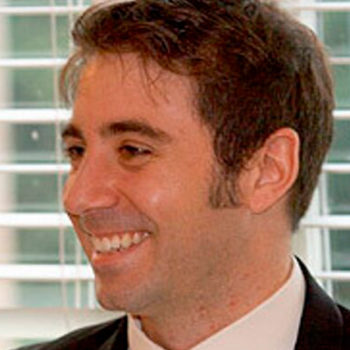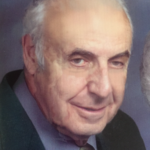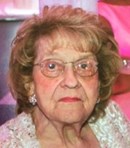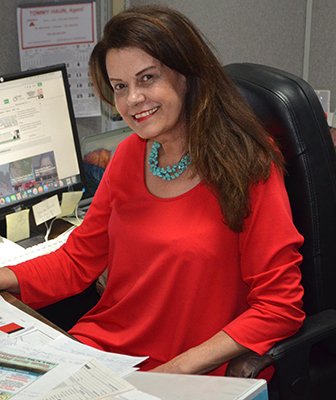The twin icons of “hip” and “hippies” are no more. Hugh Hefner, who died Sept. 27 at age 91, taught the Beat and boomer generations provocative lessons about sex, jazz and a lifestyle free from guilt — fueling, if not founding, a sexual revolution that would shake the nation and overturn social taboos through his Playboy magazine and his own free-wheeling lifestyle. In his later years and up to the day of his death, Hefner lived in the nation’s mind as a silk-pajama-clad swinger who enjoyed a taboo-shattering, hedonistic lifestyle that he both created and promoted.
Rolling Stone magazine, first published in 1967, followed Hefner into the nation’s psyche and onto its newsstands, no less an arbiter of music, film, politics and art. It was the must-read of the counterculture.
Earlier this month, Rolling Stone founder Jann Wenner announced that he would sell his controlling interest in the publication.
Playboy and Rolling Stone magazines might well continue publishing for years, but without Hefner and Wenner — two free spirits who helped shape American culture for more than 50 years — it won’t be the same.
First, on Playboy and its larger-than-life founder: To play on an old joke, yes, there really were articles to read along with eyeing the nude centerfolds. Hefner used his magazine to give voice to the leading writers, pop philosophers and artists of the latter half of the 20th century, and to promote his views on civil rights, sexual freedom and social tolerance.
Writers Norman Mailer and Gore Vidal, music superstars Miles Davis, John Lennon and Yoko Ono, activist Martin Luther King Jr. and athlete Muhammad Ali were just a few of the hundreds who found a home in Playboy’s pages. In the magazine’s early years, it serialized Ray Bradbury’s landmark novel and screed against censorship, the futuristic “Fahrenheit 451.”
Earlier this year Hefner and his daughter Christie, who was for many years his successor at Playboy Enterprises, were honored with the Newseum’s Free Expression Award for their combined support of free expression, social justice and equality.
Even as the fortunes of the Playboy empire shifted and waned, “Hef” created the Hugh M. Hefner Foundation that remains committed, in part through its annual First Amendment Awards, to honoring and inspiring the kind of commitment to free speech he so passionately embraced and exemplified.
There will be those who will mark his death with criticism of the “Playboy Philosophy” — Hefner’s declaration of freedom from what he saw as the straight-laced, suffocating social standards of post-World War II life. And there will be many people who will not forgive him for what they saw as the vulgar depiction of women as little more than bare-breasted, adolescent sex toys.
But those critics will once again fall short of taking the full measure of a publisher who put his passion for free speech ahead of his business and fortune. Through the decades, Hefner’s company fought multiple legal battles against self-appointed cultural censors and pandering politicians who tried to impose limits on the press.
Those critics will also gloss over Hefner’s early, innovative use of television with the shows “Playboy Penthouse” and “Playboy After Dark,” which presented a racially diverse set of musicians, comedians and other artists, comfortable in one another’s company at a time when, in many parts of the nation, they could not even have been seated in the same room.
And, lest we forget, there also was “The Playboy Interview” — the front-of-book, Q&A feature that provided newsmakers of the time a place to speak their minds to a mass audience in a personal manner not seen elsewhere. From Steve Jobs to Billie Jean King, from “Roots” author Alex Haley to futurist Marshall McLuhan, from Frank Sinatra to Snoop Dog, Playboy showed celebrities in a more personal, authentic light, which was markedly different from the celebrity profiles in other publications.
This oh-so-personal icon of “hip” was preceded into pop history only days earlier by the end of Rolling Stone magazine as we knew it — a singular, sometimes spectacular, “hippie” troubadour extolling the virtues of rock ‘n’ roll, celebrity lifestyles and pop lit.
A 1972 hit song said it best, and with more than a tinge of irony, when it described Rolling Stone at its pinnacle in the “sex, drugs and rock ‘n’ roll” era:
“Well, we’re big rock singers
We got golden fingers
And we’re loved everywhere we go (that sounds like us)
We sing about beauty and we sing about truth
At ten thousand dollars a show (right)
We take all kinds of pills that give us all kind of thrills
But the thrill we’ve never known
Is the thrill that’ll gitcha when you get your picture
On the cover of the Rollin’ Stone”
— “Cover of Rolling Stone,” by Dr. Hook and the Medicine Show, released November 1972
Today’s hipsters are more likely to get music news, and perhaps all news, scrolling through social media feeds on their iPhones. Still, the magazine’s cover image retained some power. As late as July, Rolling Stone showed signs of its old counterculture spunk when it featured a soulful photo of Canadian Prime Minister Justin Trudeau with the headline, “Why can’t he be our president?”
The magazine was both incubator and home to the best American writers of the last half-century, being the first to feature landmark literary works by Tom Wolfe and Hunter S. Thompson. It also published some of the best investigative and political reporting of the time. Rolling Stone took readers behind the scenes of the music, film and TV industries; its highly personal style shattering the “who, what, when, where and why” approach of mainstream media.
From takes on a national pension scandal to invasive, critical looks at Wall Street shenanigans, to a devastatingly-detailed profile of then-Gen. Stanley McChrystal, it was Rolling Stones’s willingness and ability to tackle major social issues along with celebrity coverage that gave the magazine its cultural swagger and impact.
Still, the magazine staggered ungracefully into its last years under Wenner. In 2014 it was forced to retract a feature story on an alleged gang rape at the University of Virginia, and was dragged into court for multiple libel lawsuits. A meticulous report that followed the well-publicized scandal slammed the magazine’s lack of editorial oversight on the discredited story.
There is good argument to be made that by 2017, Hefner and Wenner and their respective publications had become modest, if not anachronistic, shells of their former selves. The brand loyalty each created and on which each depended is now diffused by easy access to a glut of information on the Web.
But they remain champions of free expression; having shown us all the power of free speech to drive social introspection and spark cultural change. And, in the main, we are all the better for that.






























Farewell to two free spirit, free speech icons
Gene Policinski
Inside the First Amendment
Gene Policinski is
chief operating officer
of the
Newseum Institute and
senior vice president
of the Institute’s
First Amendment Center.
He can be reached at
gpolicinski@newseum.org.
Follow him
on Twitter: @genefac
The twin icons of “hip” and “hippies” are no more. Hugh Hefner, who died Sept. 27 at age 91, taught the Beat and boomer generations provocative lessons about sex, jazz and a lifestyle free from guilt — fueling, if not founding, a sexual revolution that would shake the nation and overturn social taboos through his Playboy magazine and his own free-wheeling lifestyle. In his later years and up to the day of his death, Hefner lived in the nation’s mind as a silk-pajama-clad swinger who enjoyed a taboo-shattering, hedonistic lifestyle that he both created and promoted.
Rolling Stone magazine, first published in 1967, followed Hefner into the nation’s psyche and onto its newsstands, no less an arbiter of music, film, politics and art. It was the must-read of the counterculture.
Earlier this month, Rolling Stone founder Jann Wenner announced that he would sell his controlling interest in the publication.
Playboy and Rolling Stone magazines might well continue publishing for years, but without Hefner and Wenner — two free spirits who helped shape American culture for more than 50 years — it won’t be the same.
First, on Playboy and its larger-than-life founder: To play on an old joke, yes, there really were articles to read along with eyeing the nude centerfolds. Hefner used his magazine to give voice to the leading writers, pop philosophers and artists of the latter half of the 20th century, and to promote his views on civil rights, sexual freedom and social tolerance.
Writers Norman Mailer and Gore Vidal, music superstars Miles Davis, John Lennon and Yoko Ono, activist Martin Luther King Jr. and athlete Muhammad Ali were just a few of the hundreds who found a home in Playboy’s pages. In the magazine’s early years, it serialized Ray Bradbury’s landmark novel and screed against censorship, the futuristic “Fahrenheit 451.”
Earlier this year Hefner and his daughter Christie, who was for many years his successor at Playboy Enterprises, were honored with the Newseum’s Free Expression Award for their combined support of free expression, social justice and equality.
Even as the fortunes of the Playboy empire shifted and waned, “Hef” created the Hugh M. Hefner Foundation that remains committed, in part through its annual First Amendment Awards, to honoring and inspiring the kind of commitment to free speech he so passionately embraced and exemplified.
There will be those who will mark his death with criticism of the “Playboy Philosophy” — Hefner’s declaration of freedom from what he saw as the straight-laced, suffocating social standards of post-World War II life. And there will be many people who will not forgive him for what they saw as the vulgar depiction of women as little more than bare-breasted, adolescent sex toys.
But those critics will once again fall short of taking the full measure of a publisher who put his passion for free speech ahead of his business and fortune. Through the decades, Hefner’s company fought multiple legal battles against self-appointed cultural censors and pandering politicians who tried to impose limits on the press.
Those critics will also gloss over Hefner’s early, innovative use of television with the shows “Playboy Penthouse” and “Playboy After Dark,” which presented a racially diverse set of musicians, comedians and other artists, comfortable in one another’s company at a time when, in many parts of the nation, they could not even have been seated in the same room.
And, lest we forget, there also was “The Playboy Interview” — the front-of-book, Q&A feature that provided newsmakers of the time a place to speak their minds to a mass audience in a personal manner not seen elsewhere. From Steve Jobs to Billie Jean King, from “Roots” author Alex Haley to futurist Marshall McLuhan, from Frank Sinatra to Snoop Dog, Playboy showed celebrities in a more personal, authentic light, which was markedly different from the celebrity profiles in other publications.
This oh-so-personal icon of “hip” was preceded into pop history only days earlier by the end of Rolling Stone magazine as we knew it — a singular, sometimes spectacular, “hippie” troubadour extolling the virtues of rock ‘n’ roll, celebrity lifestyles and pop lit.
A 1972 hit song said it best, and with more than a tinge of irony, when it described Rolling Stone at its pinnacle in the “sex, drugs and rock ‘n’ roll” era:
“Well, we’re big rock singers
We got golden fingers
And we’re loved everywhere we go (that sounds like us)
We sing about beauty and we sing about truth
At ten thousand dollars a show (right)
We take all kinds of pills that give us all kind of thrills
But the thrill we’ve never known
Is the thrill that’ll gitcha when you get your picture
On the cover of the Rollin’ Stone”
— “Cover of Rolling Stone,” by Dr. Hook and the Medicine Show, released November 1972
Today’s hipsters are more likely to get music news, and perhaps all news, scrolling through social media feeds on their iPhones. Still, the magazine’s cover image retained some power. As late as July, Rolling Stone showed signs of its old counterculture spunk when it featured a soulful photo of Canadian Prime Minister Justin Trudeau with the headline, “Why can’t he be our president?”
The magazine was both incubator and home to the best American writers of the last half-century, being the first to feature landmark literary works by Tom Wolfe and Hunter S. Thompson. It also published some of the best investigative and political reporting of the time. Rolling Stone took readers behind the scenes of the music, film and TV industries; its highly personal style shattering the “who, what, when, where and why” approach of mainstream media.
From takes on a national pension scandal to invasive, critical looks at Wall Street shenanigans, to a devastatingly-detailed profile of then-Gen. Stanley McChrystal, it was Rolling Stones’s willingness and ability to tackle major social issues along with celebrity coverage that gave the magazine its cultural swagger and impact.
Still, the magazine staggered ungracefully into its last years under Wenner. In 2014 it was forced to retract a feature story on an alleged gang rape at the University of Virginia, and was dragged into court for multiple libel lawsuits. A meticulous report that followed the well-publicized scandal slammed the magazine’s lack of editorial oversight on the discredited story.
There is good argument to be made that by 2017, Hefner and Wenner and their respective publications had become modest, if not anachronistic, shells of their former selves. The brand loyalty each created and on which each depended is now diffused by easy access to a glut of information on the Web.
But they remain champions of free expression; having shown us all the power of free speech to drive social introspection and spark cultural change. And, in the main, we are all the better for that.